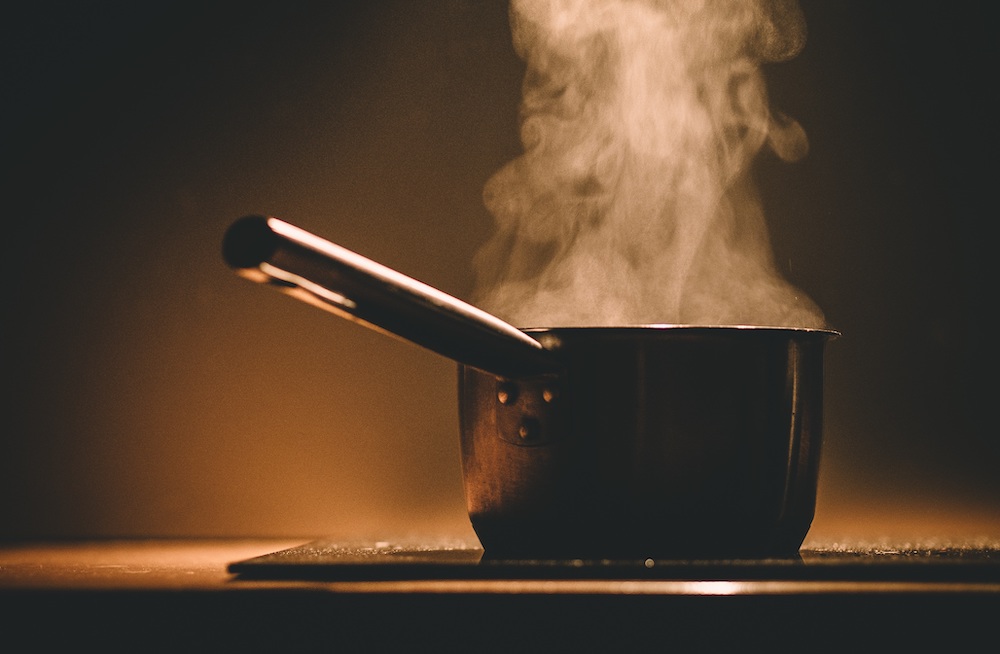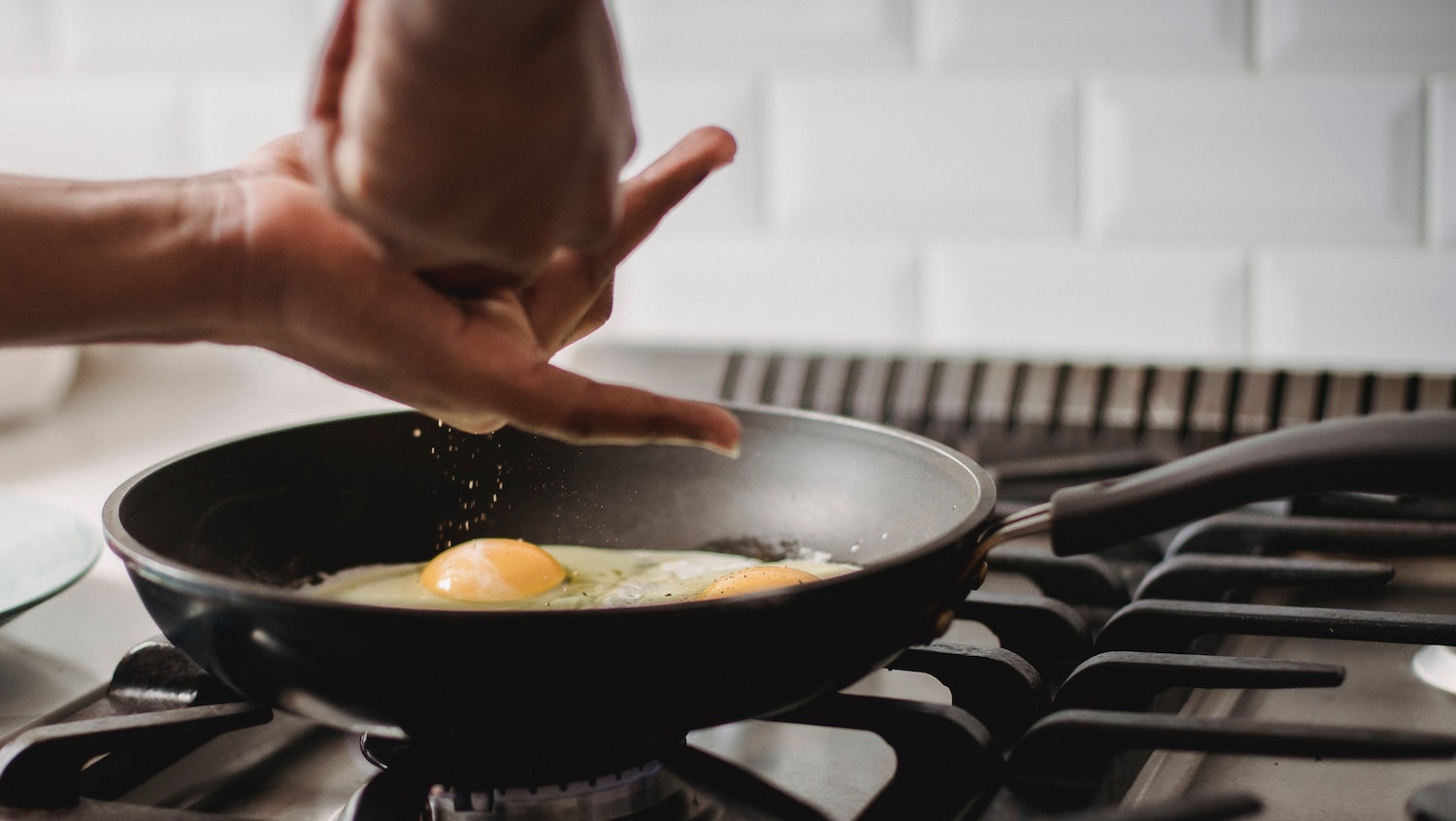Do You Need a Splashback Behind a Cooker?

Splashbacks are frequently seen as a stylish addition to modern kitchens, adding a touch of personality whilst complementing the overall aesthetics.
But are they simply a decorative piece or is there more to their function?
Particularly when it comes to their placement behind cookers, you may be wondering if a splashback is really necessary.
In this post, we aim to explore the role of splashbacks behind cookers in depth, examining their practical benefits and the potential consequences of not having one.
Click here to see our range of aluminium Alusplash splashbacks.
Do You Need a Splashback Behind a Cooker?
Yes, a splashback is generally recommended to be installed behind a cooker in a kitchen for several reasons:
- Protection Against Stains and Spills: Cookers are typically used for preparing food, which often involves frying, boiling, or simmering. These processes can lead to splashes of oil, sauce, or other liquids that could stain the wall. A splashback, being easy to clean, can protect your wall from these potential stains and spills.
- Heat Resistance: Splashbacks, especially those made from materials like glass, stainless steel, or tiles, can resist heat from the cooker. This is especially important for gas cookers, which can generate significant heat that could potentially damage an unprotected wall.
- Prevent Damage from Moisture: If you're cooking with a lot of steam or boiling liquids, moisture can accumulate on the walls. Over time, this moisture could lead to mould growth or other forms of water damage. A splashback creates a barrier that prevents this moisture from reaching the wall.
- Easy Cleaning: Splashbacks are typically easier to clean than a painted or wallpapered wall. This can save you time and effort when cleaning up after cooking.
- Aesthetics: Aside from their practical benefits, splashbacks can also add to the aesthetic appeal of your kitchen. They come in a wide range of colours, designs, and materials, allowing you to match or complement your kitchen's decor.
While it is possible to have a kitchen without a splashback behind the cooker, the benefits they provide in terms of protection and ease of cleaning make them a highly recommended feature in kitchen design.
Related Post: How To Fit A Glass Splashback To A WallWhat Different Materials Are Splashbacks Made From?
Splashbacks can be made from a variety of materials, each with its unique characteristics, aesthetics, and maintenance requirements.
Here are some common materials used for kitchen splashbacks:
- Glass: Glass splashbacks are a popular choice due to their sleek and modern appearance. They're easy to clean, resistant to heat, and can be produced in virtually any colour. You can also get them in clear or frosted finishes.
- Acrylic: Acrylic splashbacks offer a similar look to glass but are generally less expensive and lighter in weight. They are also available in a wide range of colours and can be cut easily to size. However, they may not be as heat resistant as glass or other materials.
- Tile: Tile splashbacks offer a lot of design flexibility as they come in many different colours, shapes, sizes, and materials (like ceramic, porcelain, or natural stone). Tiles can also withstand high temperatures, making them a good choice for behind cookers. However, grouted areas between tiles may require more effort to clean.
- Stainless Steel: Often seen in professional kitchens, stainless steel splashbacks provide a clean, modern look. They're extremely durable, heat resistant, and easy to clean. However, they can show fingerprints and smudges, so regular wiping may be necessary.
- Stone: Natural or engineered stone splashbacks, such as granite, quartz, or marble, can provide a luxurious look to the kitchen. They are durable and heat resistant, but can be quite heavy and require professional installation.
- Laminate: Laminate splashbacks are a cost-effective option available in a wide range of colours and patterns, including designs that mimic the look of wood, stone, or tile. They are easy to clean, but their resistance to heat and scratches can vary based on the quality.
- Solid Surface: Materials like Corian offer a seamless look as they can be cut and shaped without visible joints. They come in a variety of colours and finishes, are easy to clean, and are more heat resistant than laminate, but less so than materials like stone or tile.
When choosing a splashback material, it's important to consider your kitchen's style, your budget, and the practicality of the material.
Each material has its pros and cons, and what works best will depend on your specific needs and preferences.
Related Post: How To Clean A Stainless Steel Splashback

Advice from an Expert Kitchen Fitter and Manufacturer
As an experienced kitchen fitter and manufacturer, I can say without any doubt that a splashback behind a cooker isn't just an aesthetic choice, but a practical one too.
They serve an important role in protecting your kitchen walls from grease, heat, and other splashes that occur during cooking.
And I can say from experience in my own kitchen they make cleaning much easier as well!
Final Notes On if You Need a Splashback Behind a Cooker
While a splashback behind a cooker is not necessarily an essetnail feature, it certainly brings a host of benefits that make it a worthwhile investment for your kitchen.
From protecting your walls from spills, splashes, and heat damage to enhancing the overall aesthetics of your kitchen, a splashback is a multifunctional feature that adds value and practicality.
The choice of material for your splashback depends greatly on your personal preferences, your kitchen's existing decor, and your budget.
With a plethora of materials to choose from, including glass, acrylic, tiles, stainless steel, stone, laminate, and solid surfaces, you can find a solution that best meets your needs.
As an experienced kitchen fitter and manufacturer, I've witnessed firsthand the significant difference a well-chosen and well-fitted splashback can make in a kitchen.
Whether you're an ardent home chef who spends a lot of time cooking or someone who simply wants a low-maintenance and stylish kitchen, a splashback behind your cooker is a feature worth considering.


